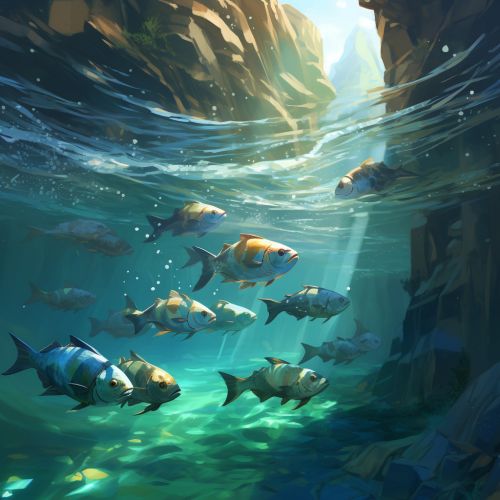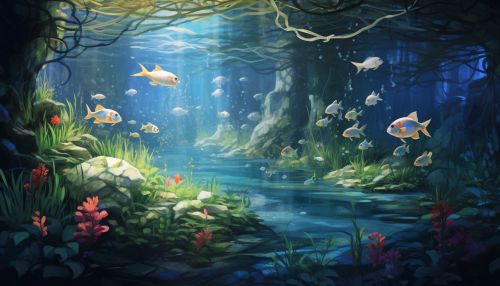Catadromous Migration
Introduction
Catadromous migration refers to the phenomenon where certain species of fish spend the majority of their lives in freshwater environments, but migrate to the sea to spawn. This type of migration is the opposite of anadromous migration, where fish live in the sea and migrate to freshwater to spawn. The term "catadromous" is derived from the Greek words "kata", meaning "down", and "dromos", meaning "running".


Catadromous Species
The most well-known catadromous species is the eel. There are approximately 800 species of eels, and most of them exhibit catadromous behavior. Other examples of catadromous species include the barramundi, mudskipper, and certain species of shrimp and crab.
Life Cycle of Catadromous Species
The life cycle of catadromous species is complex and involves several stages. The fish are born in the sea, usually in areas of deep water. The larvae, known as leptocephalus, drift in the ocean currents for several months before transforming into a more recognizable fish shape, known as elver or glass eel. These young eels then migrate to freshwater rivers and streams, where they grow and mature. When they reach sexual maturity, they migrate back to the sea to spawn and the cycle begins again.
Migration Process
The migration process of catadromous species is a remarkable feat of endurance and navigation. These fish are able to travel hundreds, sometimes thousands, of kilometers from their freshwater homes to their spawning grounds in the sea. They are able to navigate this journey through a combination of environmental cues, such as the Earth's magnetic field, and innate homing instincts.
Importance of Catadromous Migration
Catadromous migration plays a crucial role in the life cycle of these species and is essential for their survival. It also has significant ecological implications, as these migratory species act as a link between freshwater and marine ecosystems, transferring energy and nutrients between these two environments.
Threats to Catadromous Species
Catadromous species face a number of threats, including habitat loss, pollution, overfishing, and climate change. These threats can disrupt their migratory patterns and have a significant impact on their populations. Conservation efforts are crucial to protect these species and the important role they play in our ecosystems.
Conservation Efforts
Conservation efforts for catadromous species involve a combination of habitat protection, pollution control, sustainable fishing practices, and climate change mitigation. These efforts require international cooperation, as these species often cross national boundaries during their migrations.
